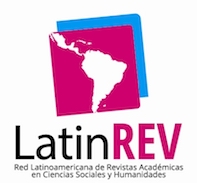Public Policies for Secondary Education in Comparative Perspective: cases of Santa Fe and Entre Ríos (2013–2017)
DOI:
https://doi.org/10.14409/ie.v0i11.8200Keywords:
expansion of rights, secondary education, inclusion, government policies, comparative studyAbstract
During the 20th century, secondary institutions
started to experience diversification since new social
sectors began to access this level of education. As a
result of the enforcement of the national education act
(«Ley de Educación Nacional» Nr. 26.206/06, LEN)
the education system was reorganized at a national
level. Also, an extension of compulsory education is
introduced from the age of 5 up to the completion of
secondary education (13 or 14 years old, depending on
the type of secondary education). This framework of constantly
increasing extension of compulsory education has
brought about the presence of an emerging public in this
level of education and, at the same time, increased rates
of school retention and dropout. Consequently, school
life of the young gains relevance both for researchers
and ministerial officials. This paper analyzes how two
provinces —Entre Ríos and Santa Fe— have addressed
the problem of school dropout in secondary level and
how they worked to guarantee inclusion of students
into secondary school from 2013 to 2017 through the
design and implementation of their respective plans
called «Polos de Reingreso» and «Vuelvo a estudiar».
Downloads
Published
How to Cite
Issue
Section
License
Those authors who have publications with this magazine, accept the following terms:
The authors will retain their copyright and guarantee the journal the right of first publication of their work,
which will be simultaneously subject to the Creative Commons Recognition License that allows third parties to share
the work whenever its author and first publication this magazine.
Authors may adopt other non-exclusive licensing agreements for the distribution of the published work (eg, deposit
it in an institutional telematic file or publish it in a monographic volume) whenever the initial publication in this
journal is indicated.
Authors are allowed and advised to disseminate their work through the Internet (eg, in institutional telematic files
or on their website) before and during the submission process, which can produce interesting exchanges and increase
citations of the published work. (See The effect of open access).
















